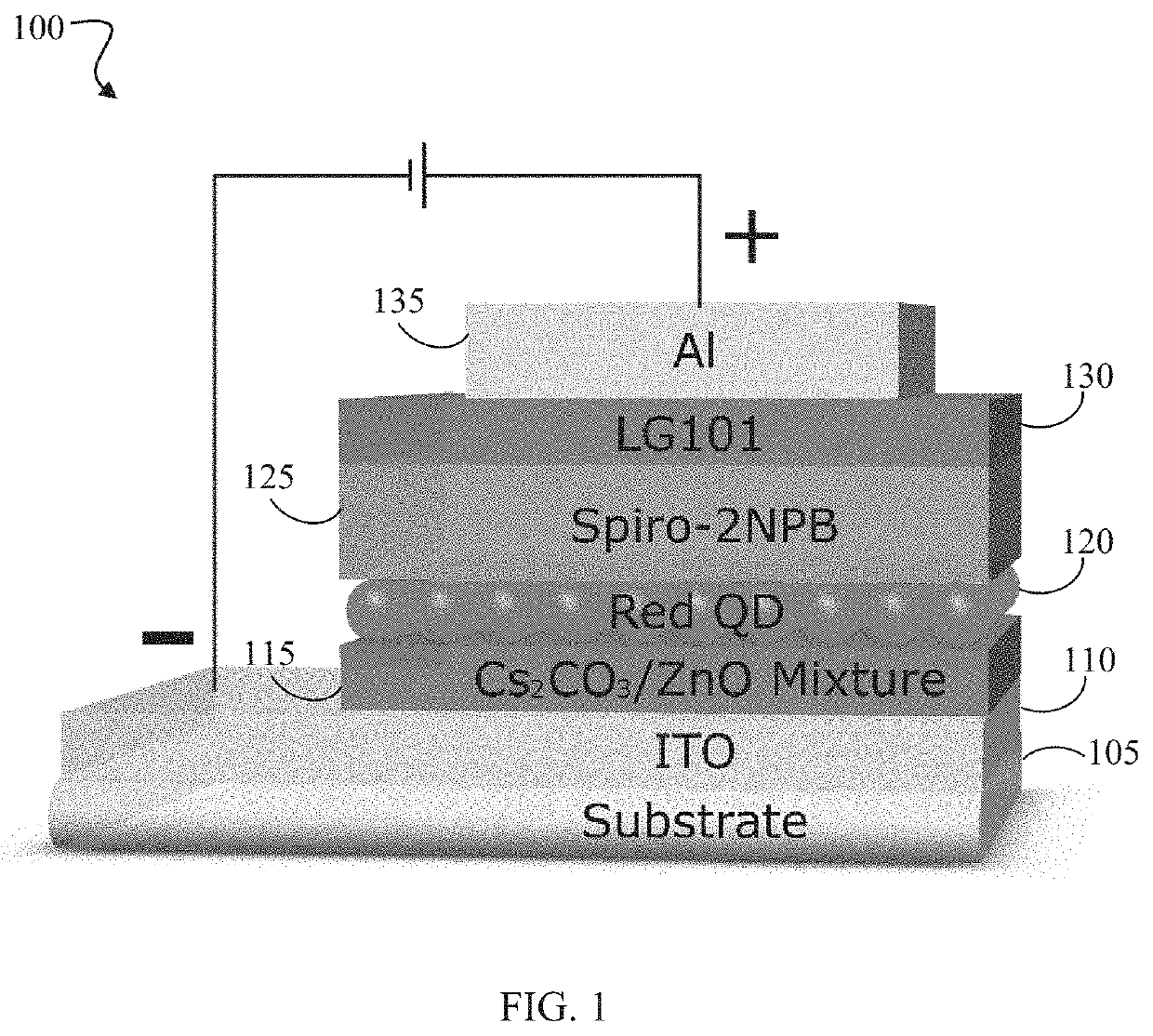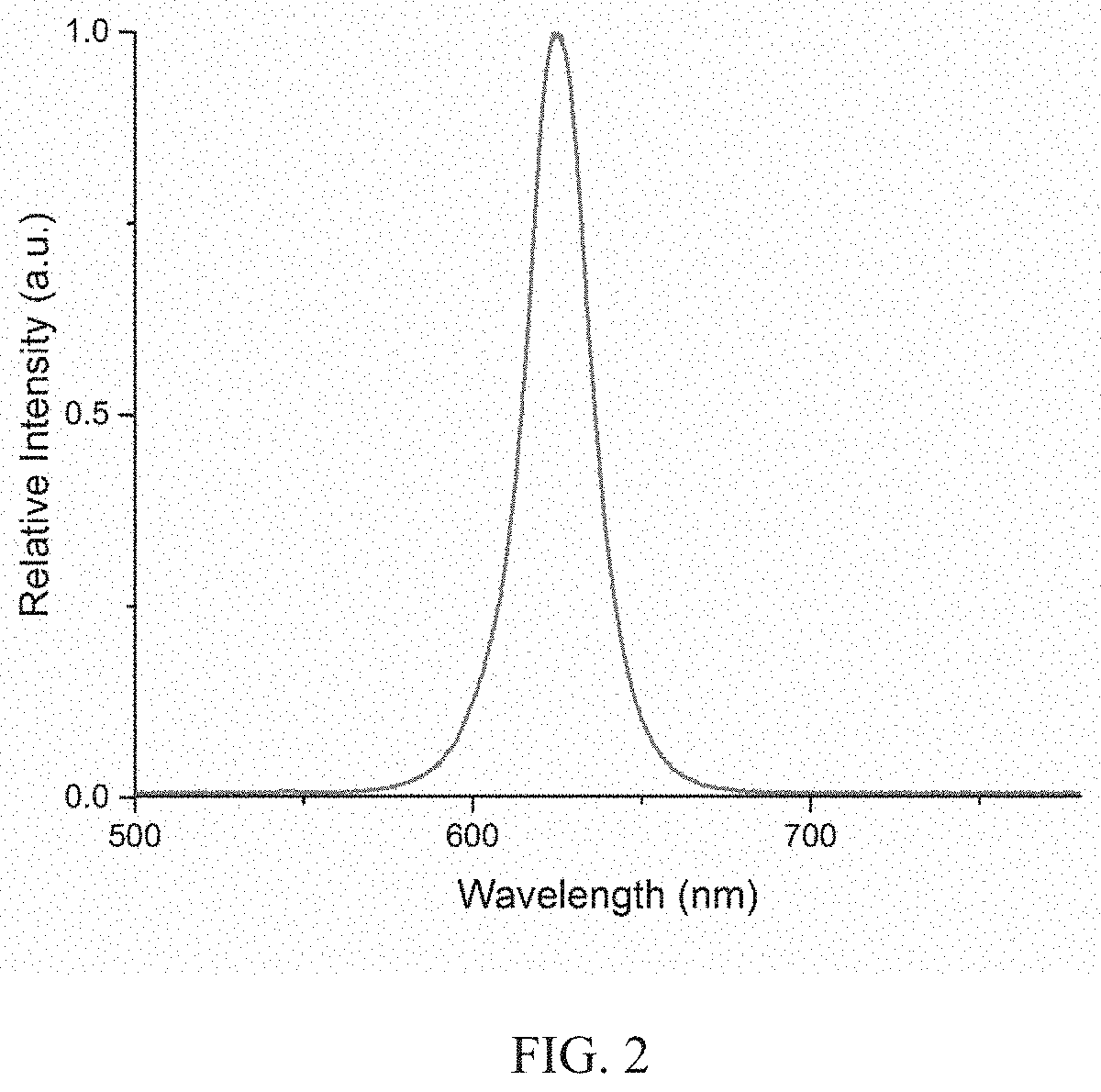Quantum dot light emitting devices (QLEDs) and method of manufacture
a light-emitting device and quantum dot technology, applied in the direction of basic electric elements, semiconductor devices, electrical equipment, etc., can solve the problems of limiting the penetration of quantum dot light-emitting devices into practical clinical use, the electroluminescence properties of quantum dot devices remain inferior to organic light-emitting, etc., to achieve small efficiency roll-off, high peak current efficiency, and high driving current density
- Summary
- Abstract
- Description
- Claims
- Application Information
AI Technical Summary
Benefits of technology
Problems solved by technology
Method used
Image
Examples
Embodiment Construction
[0046]In the following description, for the purposes of explanation, numerous specific details are set forth in order to provide a thorough understanding of the present invention. It will be apparent, however, to one skilled in the art that the present invention may be practiced without these specific details. In order that the invention may be readily understood and put into practical effect, preferred embodiments will now be described by way of the following non-limiting examples.
[0047]In various embodiment, methods of making ultrabright quantum dot light-emitting devices (QLEDs) are provided. In general, the methods comprise depositing quantum dot (QD) layers to function as emitters and a mixture layer of metal oxide nanoparticles and alkali metal compounds for the simultaneous electron injection and hole blocking to achieve charging balance at high driving current conditions, and thus ultrahigh brightness which is at least 2 to 3 times higher than maximum brightness of previous ...
PUM
| Property | Measurement | Unit |
|---|---|---|
| thickness | aaaaa | aaaaa |
| thickness | aaaaa | aaaaa |
| concentration | aaaaa | aaaaa |
Abstract
Description
Claims
Application Information
 Login to View More
Login to View More - R&D
- Intellectual Property
- Life Sciences
- Materials
- Tech Scout
- Unparalleled Data Quality
- Higher Quality Content
- 60% Fewer Hallucinations
Browse by: Latest US Patents, China's latest patents, Technical Efficacy Thesaurus, Application Domain, Technology Topic, Popular Technical Reports.
© 2025 PatSnap. All rights reserved.Legal|Privacy policy|Modern Slavery Act Transparency Statement|Sitemap|About US| Contact US: help@patsnap.com



